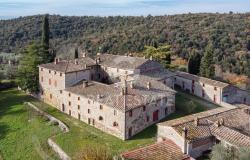 Florence has given its rich but rough Renaissance soccer pageant a red card after two years of bloody brawls.
Florence has given its rich but rough Renaissance soccer pageant a red card after two years of bloody brawls.
Officials said the famed Calcio Storico tournament - a rival in pomp and passion to Siena's Palio - was taking a year off to let tempers cool.
"Hopefully we'll get the ball rolling again in 2008," said City Popular Traditions Councillor Eugenio Giani.
"This isn't the first time the tournament has had to be sin-binned for getting out of hand," he pointed out.
Each June, around the feast of the city's patron John the Baptist, Calcio Storico pits city quarters against each other in red-hot historic rivalry.
A mix of soccer, rugby, Greco-Roman wrestling and bare-knuckle fighting, Calcio Storico - historic soccer, or soccer in livery - is not for the squeamish.
Like the Siena bare-back horse race, grand ceremony and glorious staging are the backdrop to a contest of almost primal ferocity.
The people of the different neighbourhoods dress up in replica Renaissance finery - perfect down to the last detail - and parade through the city before the match.
The referees are dressed just as nicely in velvet jackets and pantaloons, their purple velvet hats topped by ostrich feathers. The leading referee raises a magnificent sword every time a goal - called a 'caccia' - is scored.
The players, too, sport traditional jerkins and breeches in the colours of the city's main historic churches - the Sky Blues (Santa Croce), the Whites (Santo Spirito), the Greens (St John) and the Reds (Santa Maria Novella).
But once the medieval cannon goes off for the start of the contest, costumed posturing gives way to age-old savagery.
ROMAN, GREEK, OR JUST WRESTLING?.
Some say the sport comes from a particularly violent Roman game called harpastum, using a small hard ball, played by the legionnaires who established the colony of Florentia in 59 BC.
Others say it was adapted from a game called 'sferomachia' played in Ancient Greece, which Rome conquered in 146 BC.
Others still say it developed in the city streets and was later adopted by noblemen who used it to settle disputes.
Everyone seems to agree that it is a precursor to modern soccer.
Today, it decides who gets to play top dog in the famously quarrelsome city.
The four quarters pick their brawniest young men to face off for the pleasure of lording it over the others for the rest of the year.
A bit like American Football, or Harry Potter's Quidditch, the 27-strong teams are divided into an attack force using all means possible to get the ball to one end of the pitch and a defense unit who'll try anything to stop them.
In practice, that means two sets of lusty warriors trying to hoist a red-and-white sphere over two low wooden walls at each end of a sand-filled Piazza Santa Croce, one of Florence's most famous squares.
In the meantime, one-on-one grapple bouts break out all over the arena, where a Green or a Red has a chance to grind a White or Blue's face into the sand - perhaps because he stole his girlfriend or cut him off in traffic one time.
The wrestling ends when the 'caccia' is achieved and a point is scored.
While team-coloured smoke-bombs go off around the ground, everyone has a breather and the event switches briefly back from violence to quaintness.
A standard-bearer runs the length of the field to celebrate and another slinks the other way, his banner furled, as the teams change ends.
In another Quidditch-like quirk, a bungled or unfair 'caccia' gives half a point to the other side.
Games usually end with torn shirts, tattered breeches, sweaty bodies covered in cuts and bruises, and skimpily clad girlfriends rushing on to succour their heroes.
Settling debts and grudges is just part of the fun, fans say - but it can turn nasty.
In 2005, police opened probes against more than 40 players, with two of them accused of grievous bodily harm.
Last year more than 50 were taken to court after a huge brawl out broke at the start of the first match, leading to the suspension of the tournament.
Now officials have called off this year's edition altogether.
"It's a real shame," said Councillor Giani.
"The event should be a symbol of Florentine pride," he said, recalling a famous game in February 1530 when starving citizens, under siege for five months, rallied to cock a snook at the watching army of Holy Roman Emperor Charles V.












